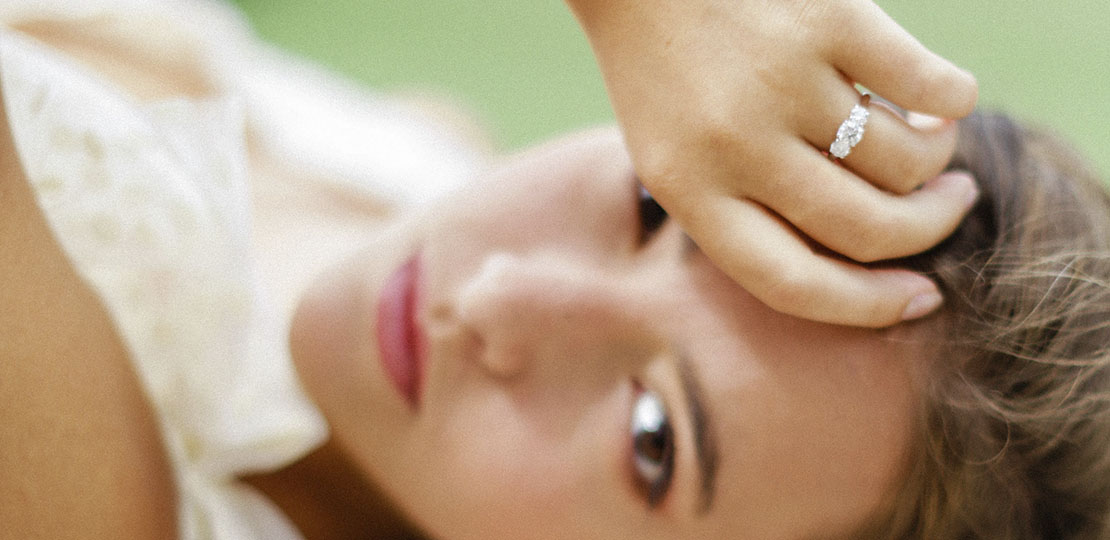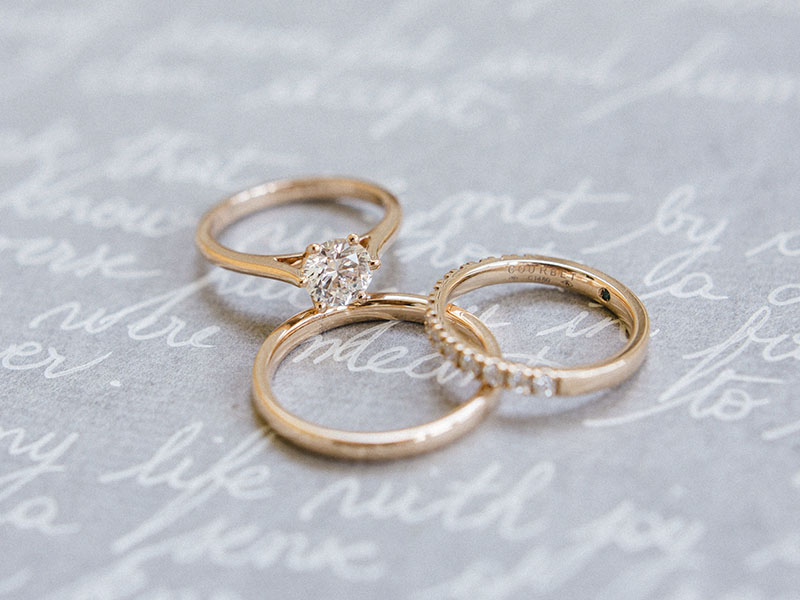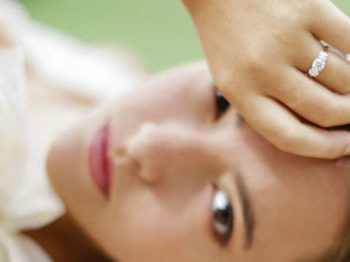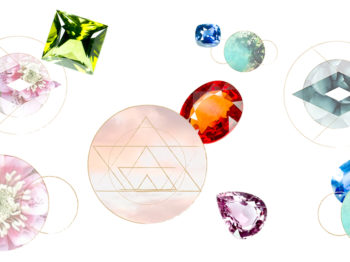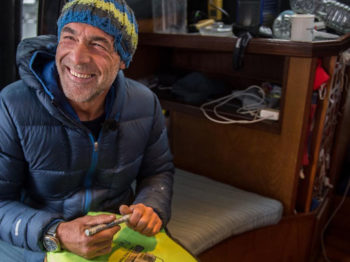Since its launch in 2018, Courbet has positioned itself as the first ethical and ecological jewelry house in Place Vendôme. A proposition that is finding an ever-growing resonance with customers looking for committed pieces that are not forgetting to be desirable.
Marie-Ann Wachtmeister is a jewelry designer and artistic director of her own brand. For many years she designed the collections of major houses, including Poiray, before making a professional and creative move. Deeply influenced by the film Blood Diamonds, which denounced the hidden face of the market for mined diamonds, Marie-Anne was keen to place creation at the service of her convictions.
In 2018, she joined forces with Manuel Mallen and founded Courbet, the first ecological and ethical jewellery house in Place Vendôme.
More than two years after its launch, I met with Marie-Ann Wachtmeister to discuss the House’s commitments, the expectations of a growing clientele, but also the creative vision that she is driving the brand. A meeting with her.
The Eye of Jewelry: How do you go from designing jewelry collections with mine diamonds to designing laboratory diamonds?
Marie-Ann Wachtmeister: More easily than if I had been in the fashion world designing clothes. In jewelry, the materials are the same: recycled gold has the same characteristics as primary gold, and the laboratory diamonds we use have the same properties as mined diamonds. On the other hand, I couldn’t have made the reverse switch from laboratory diamonds to working with mined diamonds. The real constraint lies in the fact that, for the moment, we at Courbet have chosen to work only recycled gold and cultured diamonds.
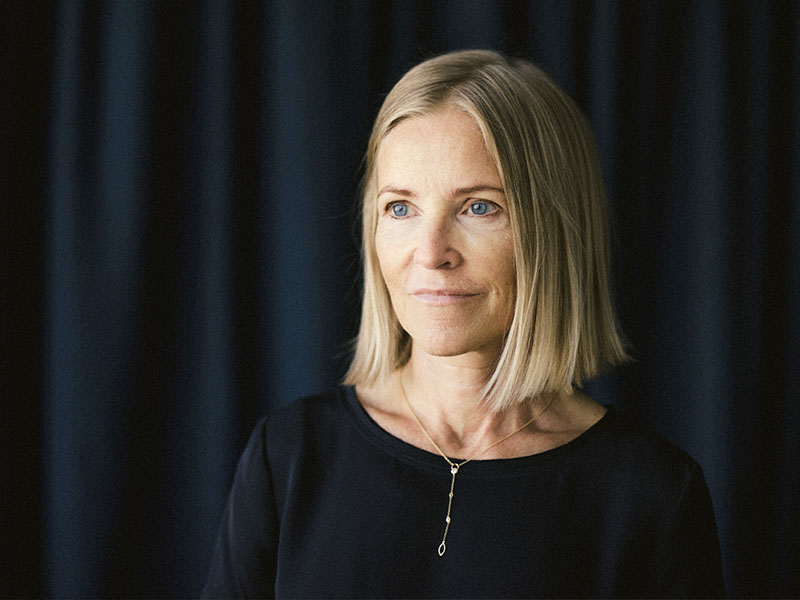
Theiofj: How do Courbet’s ecological values impact your artistic choices?
Marie-Ann Wachtmeister: They make me even more demanding and attentive to the design I propose. Choosing ecological materials inevitably raises the question of the timelessness of design, of the ability of our pieces to last over time, beyond fashion. There is a real challenge in finding the right balance between classic lines and innovative proposals. Each piece of jewelry must be totally relevant to the brand, in relation to the message we convey.
Theiofj: In parallel to your collections, your Bridal line has developed strongly. Is this an expectation of your customers?
Marie-Ann Wachtmeister: There is a growing desire among our customers to make the highlights of their lives in line with their convictions. Whether they are innovative or environmentally conscious, our customers recognise themselves in the Courbet style, in our ability to combine ecology with design desirability.

Theiofj: How would you define the style of your Bridal line?
Marie-Ann Wachtmeister: Simplicity and sensuality. The Bridal line was born out of a real reflection on what I wanted to offer because I didn’t find myself in the current offer, which is dominated by 4 or 6 claws single-handed sailboats. I wanted to give more emphasis to the stone, to give it roundness, while maintaining a timeless line. This is how I came up with the idea of developing a setting specific to the brand. The C-shaped Courbet setting releases the diamond. With its two curved claws, the whole of the diamond’s end is exposed to the light, accentuating the brilliance of the stone.
Theiofj: Even though they are well informed, do your customers ask you where your diamonds come from?
Marie-Ann Wachtmeister: Yes, and that’s quite normal. We have invested in French diamonds, particularly those from the Diam Concept company founded by Alix Gicquel, which we have used to set the pieces in the Pont des Arts collection. We also obtain our supplies from laboratories in the United States and Russia, especially for large stones. Contrary to what some may believe, just because a diamond is produced in a laboratory does not mean that it can be made in unlimited quantities. The initial investment is colossal, the machines require constant adjustment, and production starts are not always successful. It takes time to obtain a laboratory quality diamond.
“Innovation is the keystone, it allows us to move forward in ecology without giving in to luxury.”
Theiofj: On this subject, what do you say to the detractors of laboratory diamonds who argue that these stones are synthetic and that they have no “soul”?
Marie-Ann Wachtmeister: To say that laboratory diamonds are synthetic is not correct – even if this is their official name – because there is no fusion of new materials in the manufacturing process. On either side, there are only carbon atoms that are transformed to form a diamond.
As for the history of the stone, if its creation process underground is exciting and conceals a part of magic, it must be completed by all that follows, post-extraction. It is difficult to make the magic last when we know the pollution induced by the activity of a mine and its societal impact, notably on the health of the miners or even child labour. If we want to be honest, we have to tell the whole story of the mined diamond.
Theiofj: Given the financial investment required for R&D in a laboratory, how do you explain the difference in cost between a mined diamond and a laboratory diamond being in your favour?
Marie-Ann Wachtmeister: At Courbet, we have chosen to offer our clients only diamonds rated D, E and F, when the majority of jewellers go down to G, which is a strong commitment to quality. The production of laboratory diamonds is expensive, but unlike the market for mined diamonds, intermediaries are very limited. I take the example of our Russian supplier who produces and cuts the stones himself. In this case, the purchase is made directly from the producer. The value of the diamond is thus transferred to the customer without the need to split the margin to different intermediaries and thus increase its final cost. This is why our Bridal line allows our customers to offer themselves larger and higher quality pieces than they could find elsewhere.
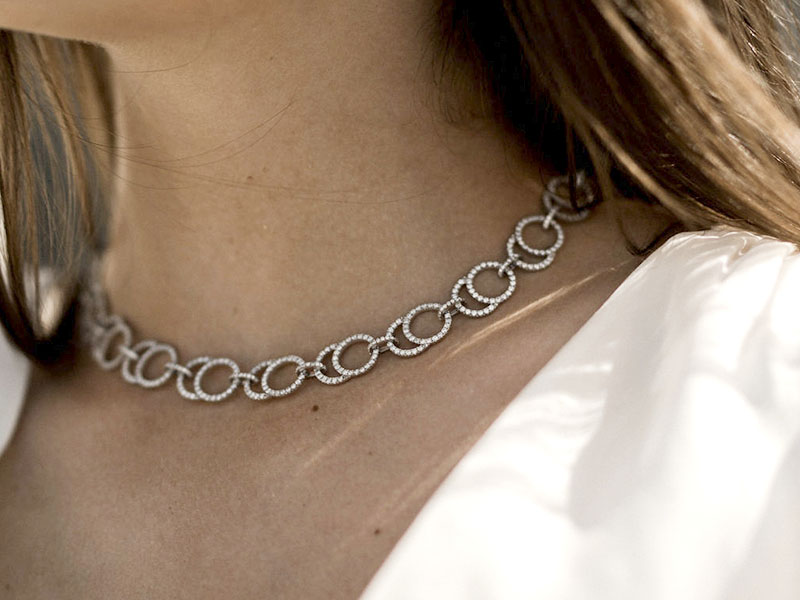
Theiofj: When you are a brand committed to ecological issues like Courbet, what is its relationship to innovation?
Marie-Ann Wachtmeister: It’s the keystone. Innovation makes it possible to advance in ecology without giving in to luxury. I’m thinking in particular of the research work we’re carrying out on luxury goods displays. How can Courbet take up the subject to offer a case that meets the codes of luxury without turning it into a container devoid of any functionality once the jewellery has been offered? It’s a very strong commitment to be ecological because it impacts the entire value creation chain. Everything must make sense.

